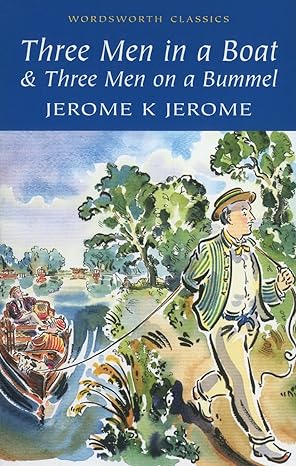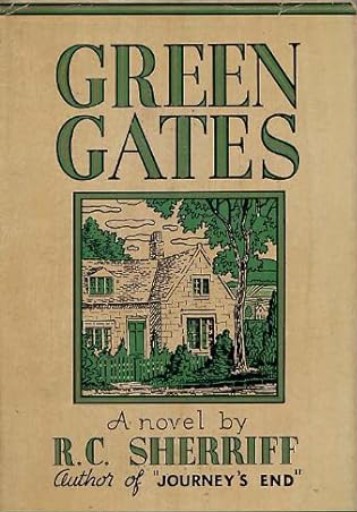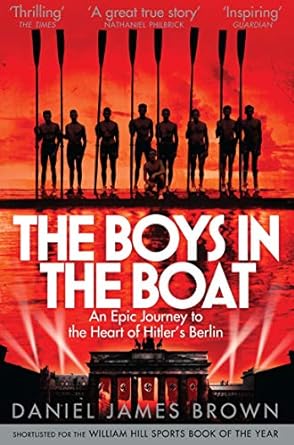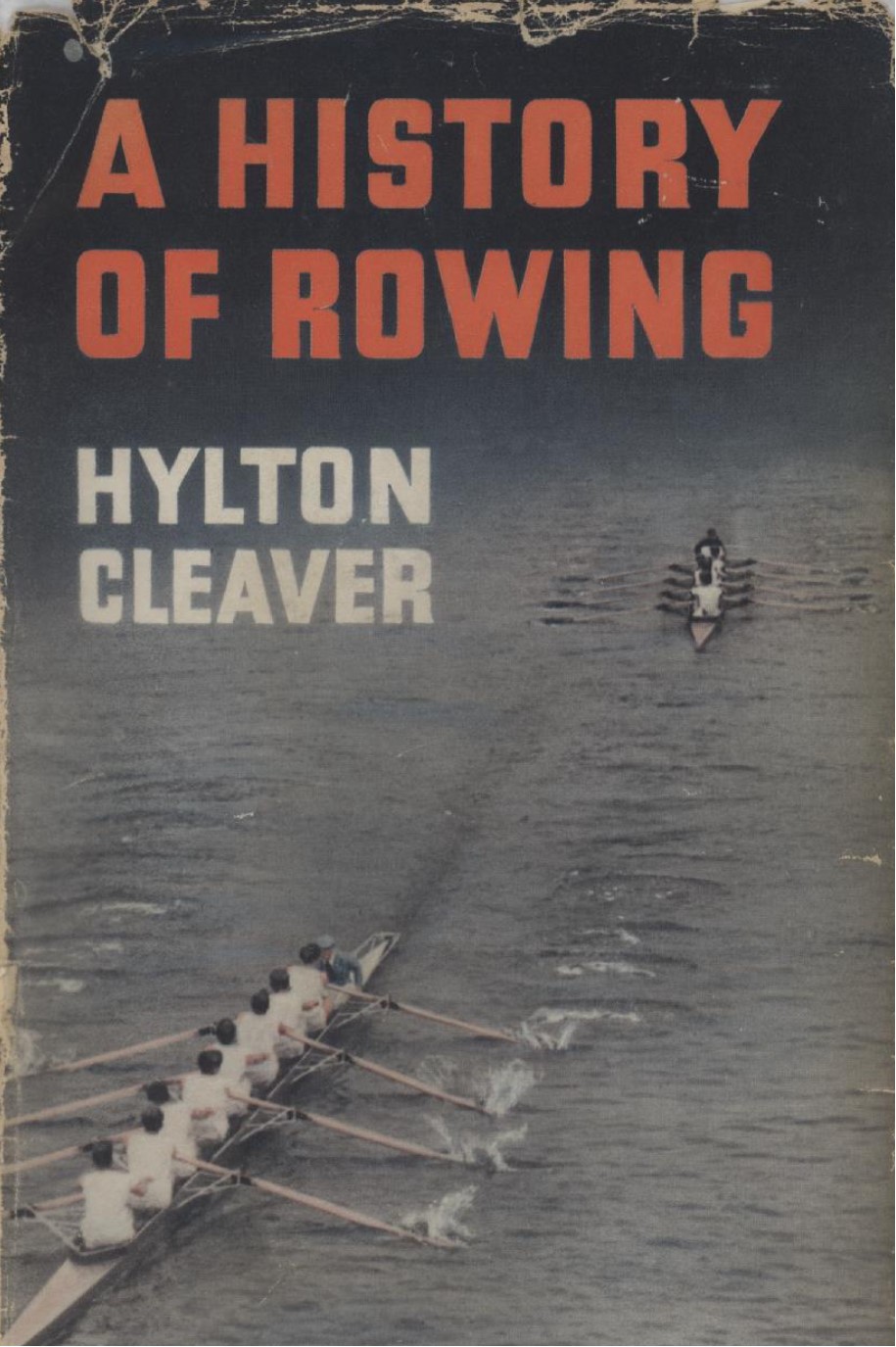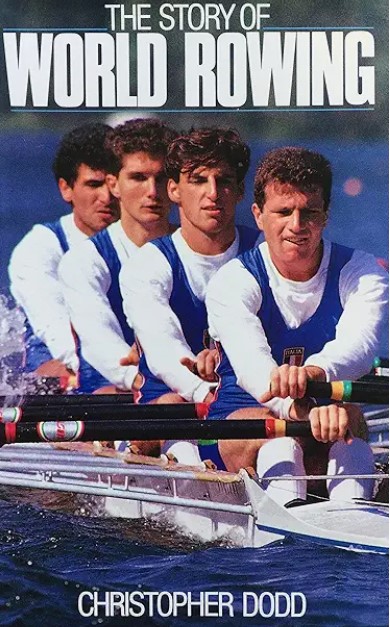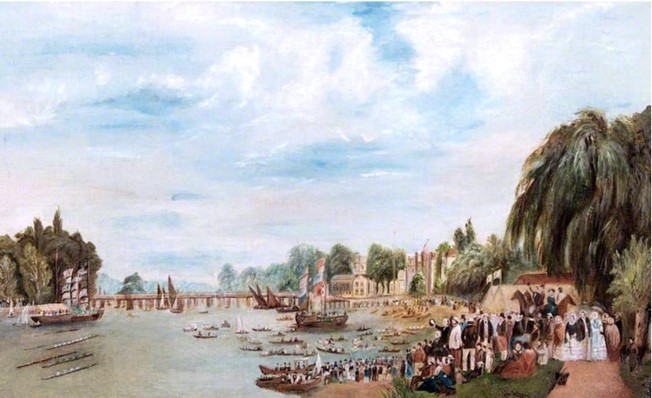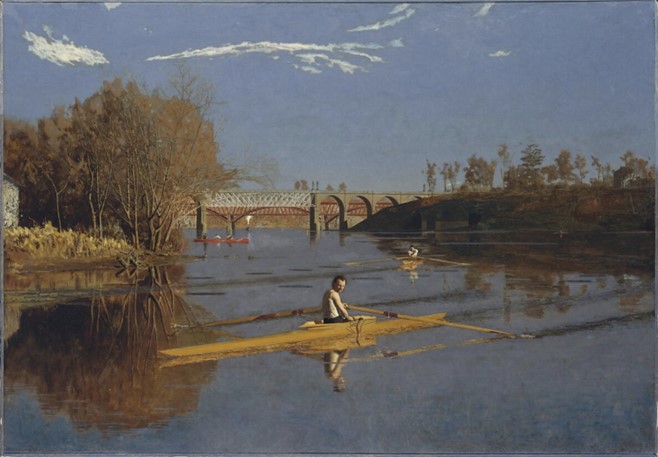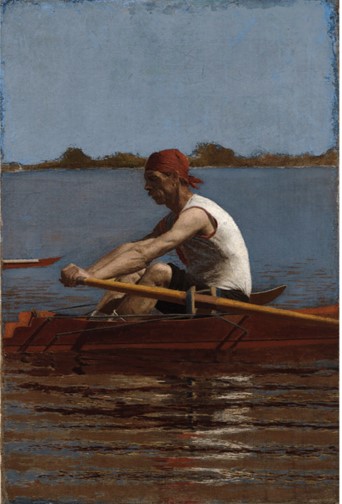
| KGSVBC Rowing Summer Holiday Series 2023A selection of rowing-related fiction, non-fiction, art, films, documentaries and notable races to enjoy over the holidays. With very big thanks to Anne Lury and Matt Mace for all their research Week 1: Books - Fiction
Three Men in a Boat - Jerome K. JeromeYes, the men and their Fox Terrier are in a skiff, but they set off from Kingston and we're all very familiar with their stretch of the Thames. Panned by critics on its publication, this comic novel became an instant best-seller, with many screen adaptations. And Jerome can be quite poetic: "The Thames would not be the fairyland it is without its flower-decked locks" (Followed by a fairly dismissive comment on late Victorian lock keepers!) Here is a map of their travels, an article on the same journey undertaken in 2018 and further analysis of all places mentioned, some advice from the novel, still pertinent in 2023. Don't forget your tin opener. Lessons in Chemistry - Bonnie GarmusAt first glance, this worldwide best-seller and Apple TV series is a novel about inequality, but it's often recommended by fellow rowers. That's because its protagonist, Elizabeth, is passionate not only about science but also about the sport. Even if you don't read the book, you'll enjoy this quote from an interview with the author, herself a former rower: "[...] rowers are just a strange bunch of people that I love. You know, if you're not a rower, you have no idea why these people are so excited about water conditions and getting up at dawn to be at the boathouse." Greengates - R.C. SherriffAlthough not about rowing, would we be on our stretch without its author? The novel follows the Baldwins as they adapt to Mr Baldwin's retirement: "for better, for worse but not for lunch". Sherriff has enormous empathy for his characters; coupled with his description of the changing figurative and literal landscape of 1930s England, it's beautifully written and a fascinating contemporary social record. Week 2: Books - Non-Fiction
Before we start, not a rowing book per se, but you may be interested to know that the first written report of a race can be found in The Aeneid, Book V: "The first event was the four heavy-oared ships of the same class picked out of the fleet." Their supporters were as loud as ours: "the heavens rang with the noise", an extra push from deities came in handy for the winners, but the prizes beat our pots: "wine, three bullocks and a great talent of silver". Dig out your school copy to read Virgil's full report. The Boys In The Boat - Daniel James BrownThe rowing book most often mentioned - the story of the University of Washington eight as they overcome multiple challenges, personal, sociological and historical, to represent the USA at the 1936 Berlin Olympics. Splendid narrative non-fiction. A History of Rowing - Hylton CleaverThis 1957 title should really be a history of English rowing, but it's a fascinating and detailed look at the sport from its earliest days and the first Doggett races to the creation of the clubs, HRR, the Boat Race, Head of the River and sea rowing, with complete appendices of Head and Regatta winners since records began. And lots of interesting facts: for example, did you know that the 1956 Boat Race was broadcast in six different languages? The Story of World Rowing - Christopher DoddWritten in 1990 for FISA's centenary, Dodd is the Guardian's former rowing correspondent, co-founder of the River & Rowing Museum and a prolific biographer. It's a thorough volume: historical chapters beginning with the Greeks, boat construction, materials and manufacturers, technique, coaches, rowing in Britain and around the world, up to the Olympic games. Some great illustrations and plates depicting boats and oars and riggers, all the stuff we like! Probably the most complete history of the sport. Does what it says on the tin. The last two books are out of print, but available second-hand. Week 3: Films and DocumentariesExtensive research reveals that there are very few good rowing films - perhaps Mr Clooney will buck the trend with his film of The Boys in the Boat out in UK cinemas in January 2024. Documentaries are a much safer bet, so we'll start with them then finish with two films (just one to watch)! Gold Fever (2000)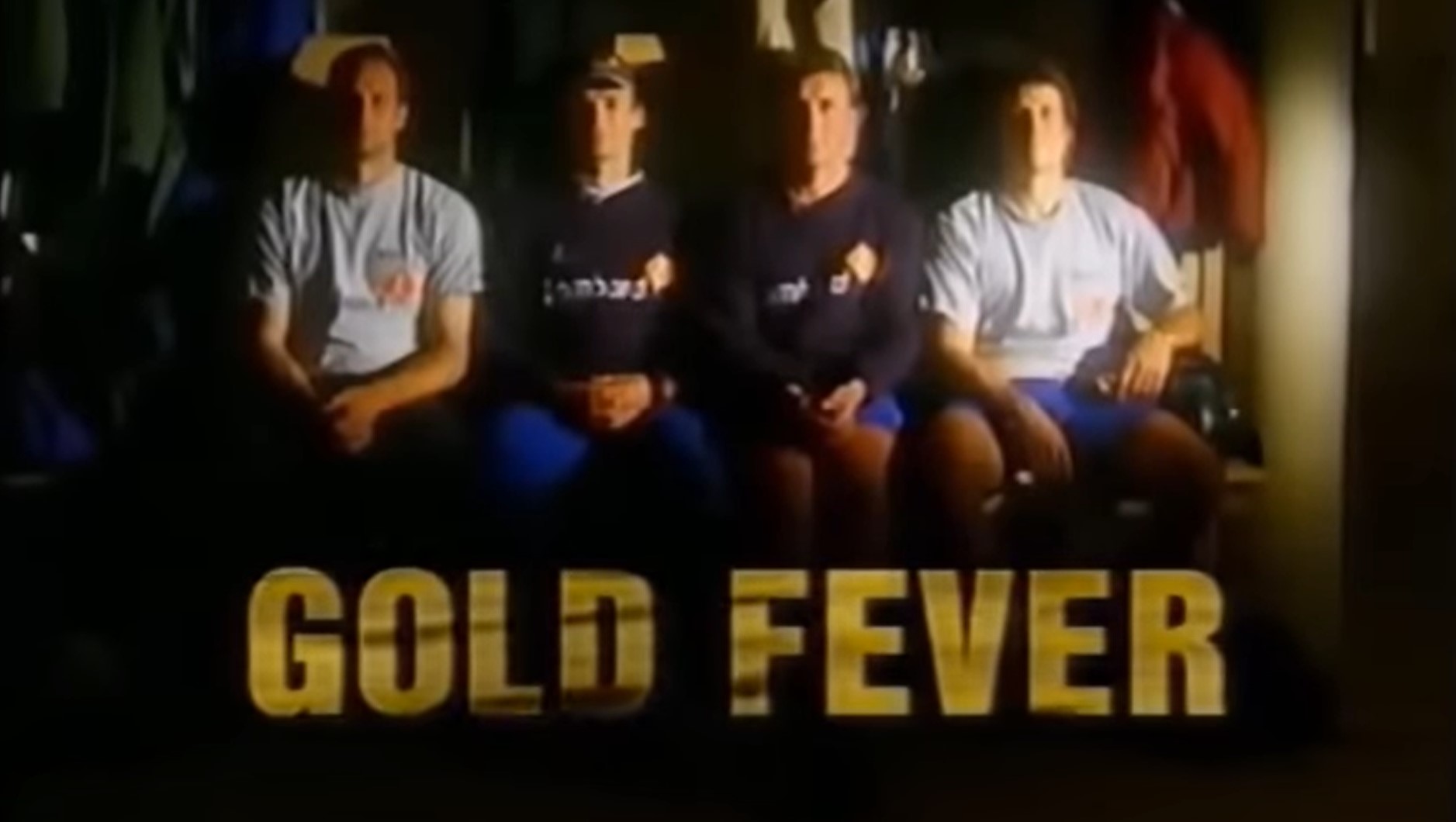
The complete BBC episodes following the coxless four of Steve Redgrave, Matthew Pinsent, Tim Foster, OK James Cracknell, and their coach, Jürgen Grobler, as they lead up to the Olympic games. (140 mins) Verdict: A classic. Rowing - A Symphony of Motion (1974)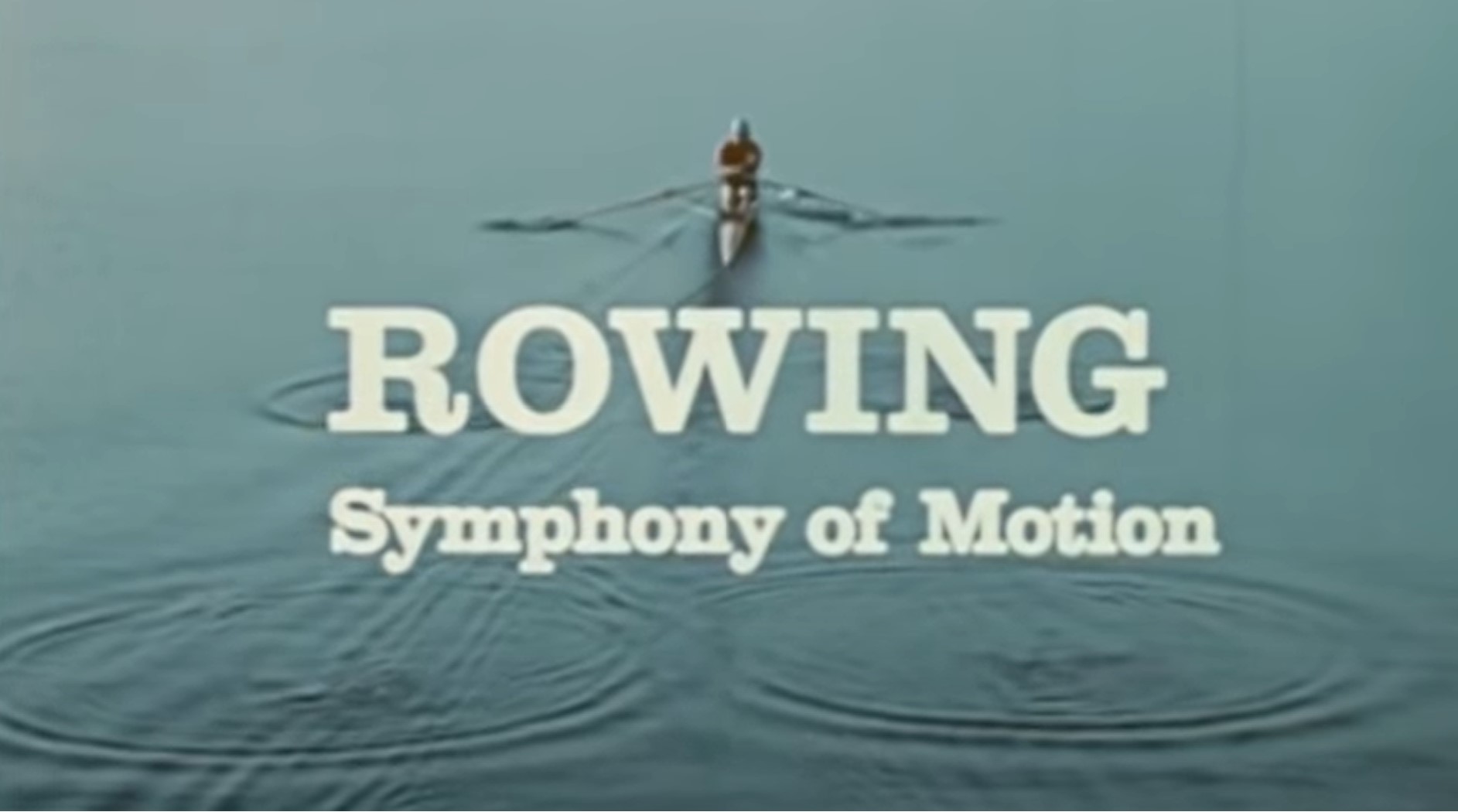
"'It's the finest art there is." This ode to rowing is a treat and makes its second appearance in the newsletter. See how much, yet how little, has changed since the early 70s. (30 mins) Verdict: A poetic gem. The World's Oldest Boat Race: Doggett's Coat & Badge (2018)
A fascinating look at the Thames rowing doyens, the watermen and lightermen, as they prepare for a race which existed long before the sport became one for amateurs only. Watch as the apprentices get ready to scull from London Bridge to Chelsea Bridge, in an event which has continuously taken place since 1715. (30 mins) Verdict: A fitting homage to a long tradition. Losing Sight of Shore (2017)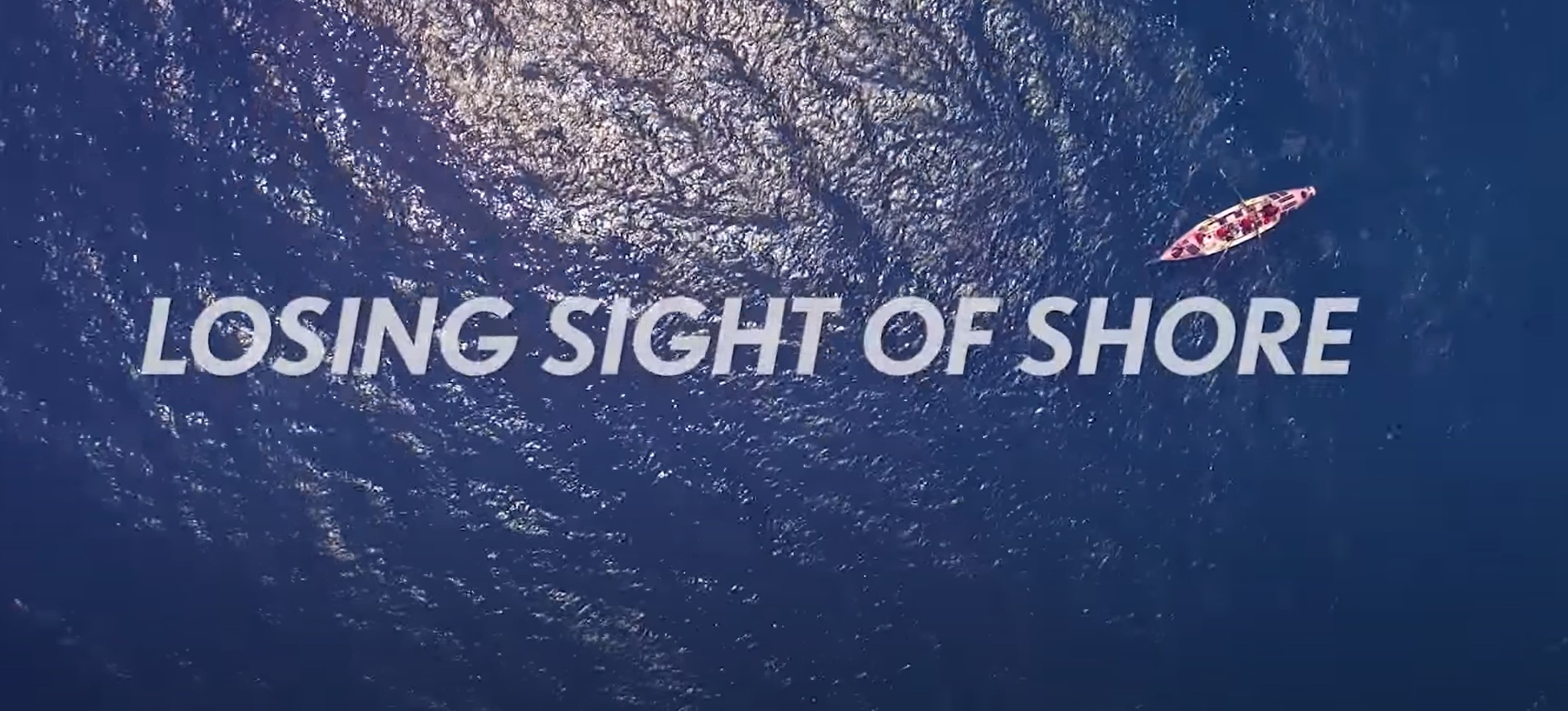
The extraordinary achievement of "The coxless crew" who rowed 8,000 miles across the Pacific without trailing boats. Three of the four women rowed the whole nine-month journey from San Francisco to Cairns with three others taking turns in stages. The excellent on-board footage was filmed by the engaging crew on their GoPro. Their diaries are a blisters and all testimony of a record-breaking row and its physical and psychological challenges. (90 mins) Verdict: A great documentary, definitely worth watching. A Most Beautiful Thing (2020)
'There was something about the water that gave us peace.' In the late 1990s, Chicago's West Side's crime rate was higher than New York City's and the PTSD rate from chronic trauma higher than in troops. Narrated by the rowers themselves, this documentary shows the formation of the first all-black high school rowing crew as its athletes face a literal daily fight for survival from the West Side's gun violence, crime and endemic gang dependency, and their return to the water two decades later. The rowers are fully aware of the far-reaching risks of this environment and how they want to alter it for future generations - it's not a film, so there's no sugar-coating. An intelligent documentary which bears witness to the impact of visionaries, generosity and community. (75 mins) The documentary is based on the memoir originally titled Suga Water, written by one of the crew, Arshay Cooper. You can read more about it here. Verdict: A must-watch. Oxford Blues (1984)
The tale of Nick Di Angelo (Rob Lowe), who hacks his way into Oxford in a weak pastiche to War Games, all because of his infatuation with a British aristocrat. Where does the rowing come in? Well, Nick joins Oriel and learns the hard way that if you don't turn up for a race, you have a good chance of really annoying your crew. (Unlike our own captains, they didn't organise subs that day). Di Angelo/Lowe also has an irritating habit at times of "rowing" in his leather jacket and jeans. The film is not even redeemed by the late Julian Sands or Ally Sheedy. Reviews were terrible - Time Out called it "tiresome" and you've probably reached the same conclusion. Incidentally, it's a remake of the critically better 1938 A Yank at Oxford with Robert Taylor and Vivien Leigh, which The New York Times described as "an uncommonly diverting show". It's not available to watch, so we'll take their word for it. Verdict: I'll never get the film's 97 minutes back but you should use them to go for a row instead.
Pressure Point (2021)
Anything viewed after Oxford Blues is automatically a great film. Also known as Heart of Champions, and not to be confused with the 1962 Sidney Poitier film, it could have done with some editing. However, it's tolerably cheesy and definitely watchable. Filmed at Louisiana State University, there are lots of stunning shots of the Mississippi River and blades in perfect unison, and it's the usual testament to teamwork and perseverance. The Marmite reviews on Rotten Tomatoes veer toward the "love it": "the multiple storylines will appeal to adolescents and to older folks". Perhaps we're the latter? (119 mins) Verdict: An easy watch, not taxing, and better than expected. "It's so bad, it's good." Some may still prefer to go for a longer row. Week 4 : Rowing in ArtHere's a selection of paintings with a rowing connection Alfred SisleyKeeping it local, we have to start with Alfred Sisley (1839-1899). Some of his most important works are the 1874 Thames paintings series, mainly of the Hampton Court stretch, which can be seen in some of the world's best museums. Two of his paintings feature the third bridge to be built there - we row under the fourth, inaugurated in 1932. 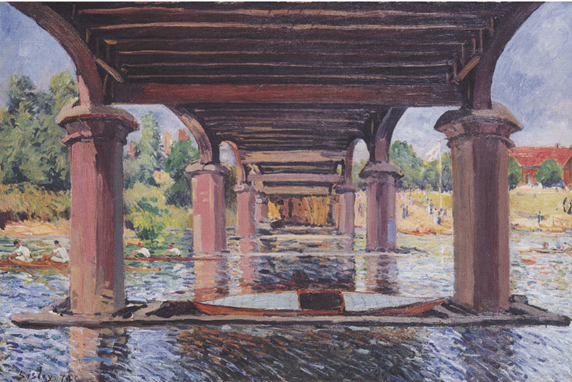
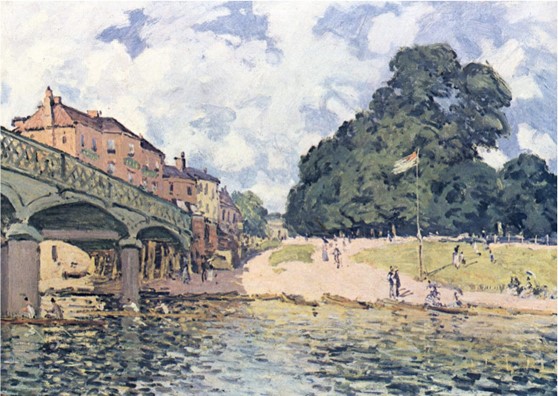
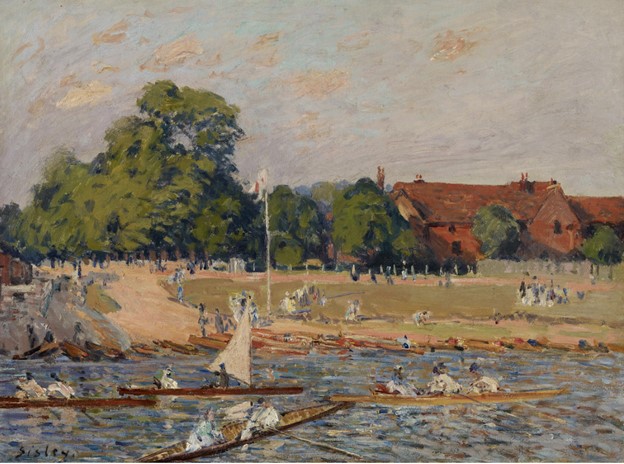
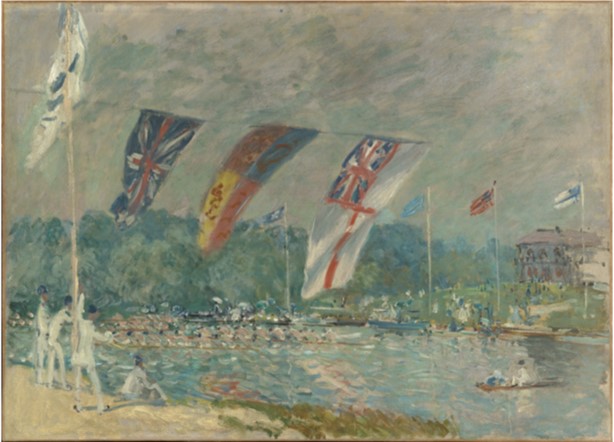
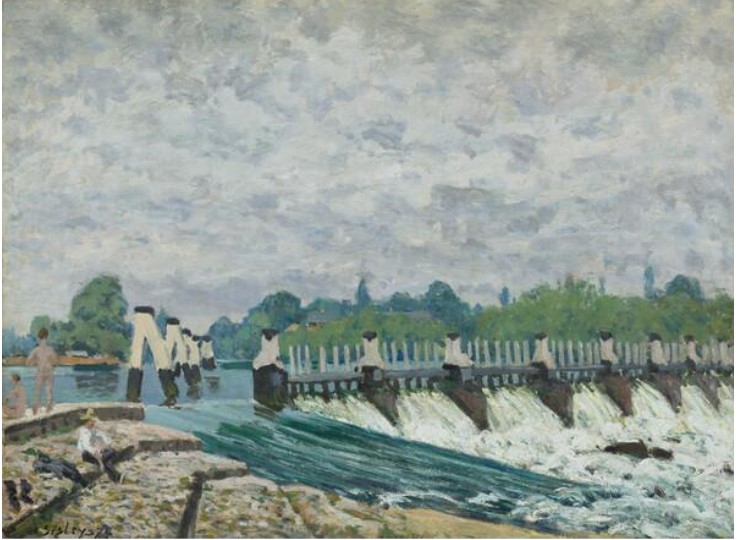
Georges SeuratProbably the only pointillist single sculler in this charming Seine view by Georges Seurat (1859-1891).A preliminary sketch for this painting is in the National Gallery. 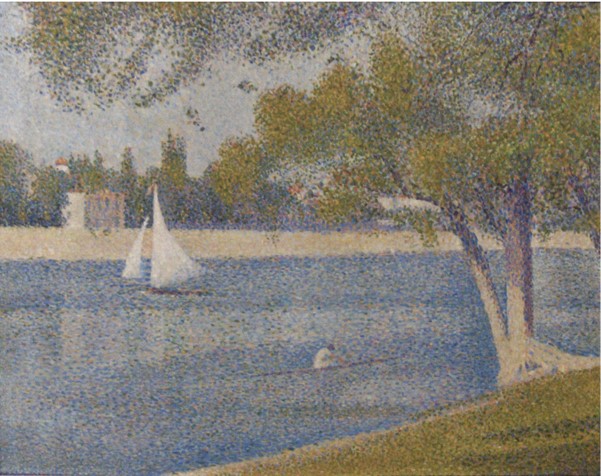
Sir John LaveryAnother charming painting of a single sculler, this time by Sir John Lavery (1856-1941), pensively waiting at Grez-sur-Loing, just south of Fontainebleau. The Bridge at Grez (1883) is in a private collection; shout if it's on your wall. The Bridge at Grez (1883) Elizabeth ClasperBack closer to home, the bridge where we all breathe a sigh of relief as it marks the Vets' Head finish.
Painted when the artist, Elizabeth Clasper (1850-1929) was just 20 years old, it's a bit stylised but interesting to see the old wooden structure
which was to be rebuilt in stone and Cornish granite by Bazalgette 16 years later.
L.S. LowryAlthough L.S. Lowry (1887-1976) is more often associated with football matches, there are two pencil sketches and a painting of the annual Agecroft Regatta (1942), which used to take place between Agecroft and Manchester University B.C. (Agecroft R.C. can be seen on the left of the image). There has been criticism that this actual event was more picturesque than Lowry's depiction - still, he evokes movement and atmosphere with his customary pencil strokes and judicious shading. Thomas EakinsIn the 1870s, rowing's most prolific artist was Thomas Eakins (1844-1916) who painted evocative portraits of scullers and rowers, usually on Pennsylvania's Schuylkill River in Philadelphia. Eakins' realist style depicted some of the finest American athletes of the time, including Max Schmitt and the Biglin Brothers. Eakins himself was an accomplished oarsman when rowing was a very popular sport in the US, practised by both men and women. In The Champion Single Sculls (Max Schmitt in a Single Scull)
Eakins has also included himself in a single in the background. This was the first of Eakins' 24 rowing paintings and it received mixed reviews,
ranging between "[it] gives promise of a conspicuous future" to "a shock to the artistic conventionalities of the city [Philadelphia]".
I agree with the former and you'll make up your own mind!
The Biglin brothers, shown in the 1872 painting below, were active in racing, according to this
article, during the decade following
the American Civil War when rowing was a popular spectator sport. Seven years before this painting, at the 1865 American Championships in Poughkeepsie,
the Biglin's 4- were declared
winners against a local crew. However, the opposing boat felt they were cut off at the finish and that the result was unfair, and the debacle
sparked city-wide riots - probably due to the large bets over 10,000 supporters had placed on the race.
This final picture rounds-up this selection. Painted in the same year as Sisley's Thames series, here is John Biglin in a single scull
Week 5 : Notable RacesThe final installation of the series: here's your inspiration for the upcoming season. 2014 HRR Temple Final - Oxford Brookes vs. Brown USA
With fantastic audio of the winning boat's cox. Brilliant stuff. (13') 1944 Oxford and Cambridge Boat Race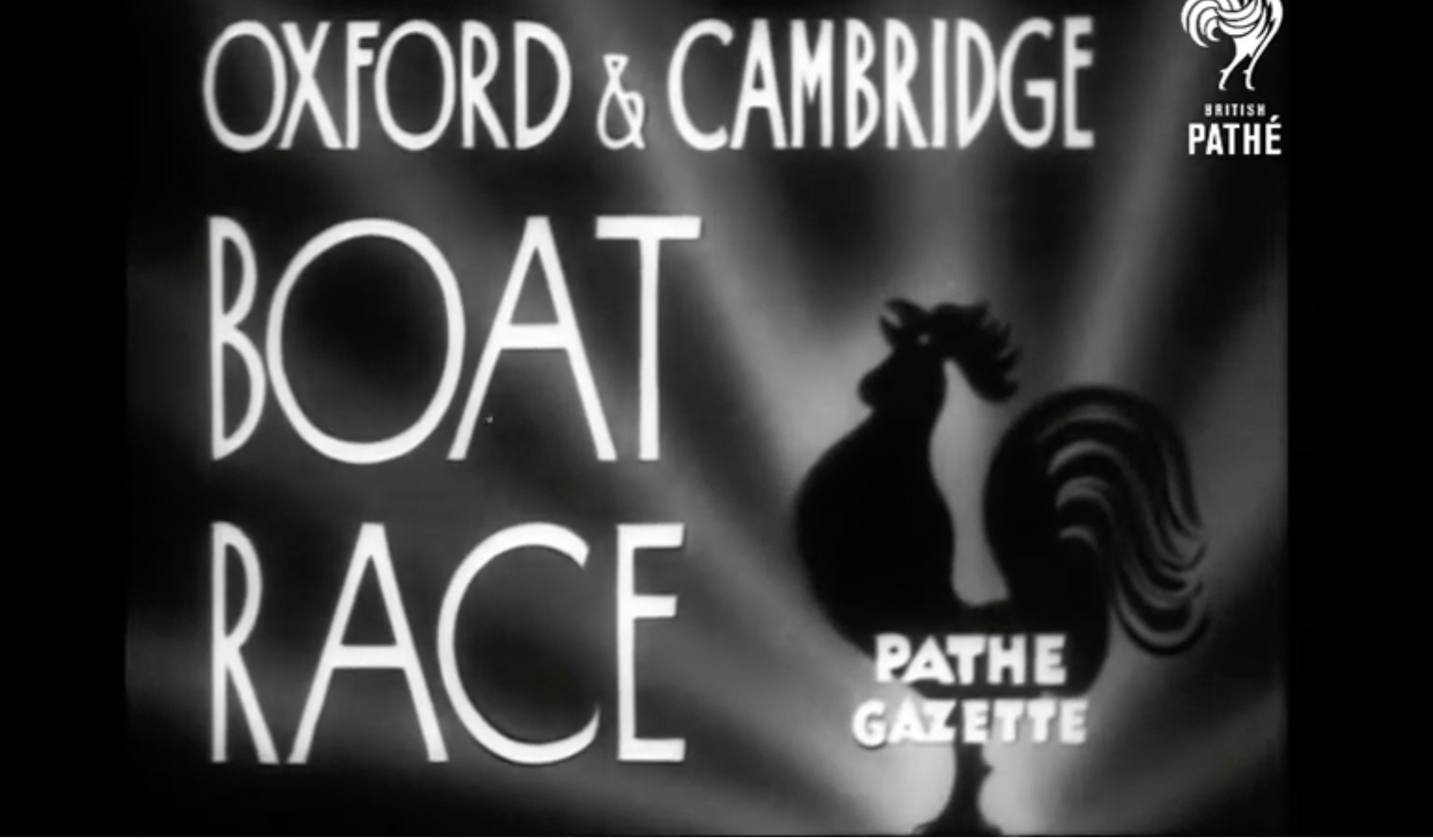
Short British Pathé film of the third unofficial boat race during the war - look out for a mode of transport on the towpath, now replaced by the coaches' bikes. (1'3)
1936 Berlin Olympics Final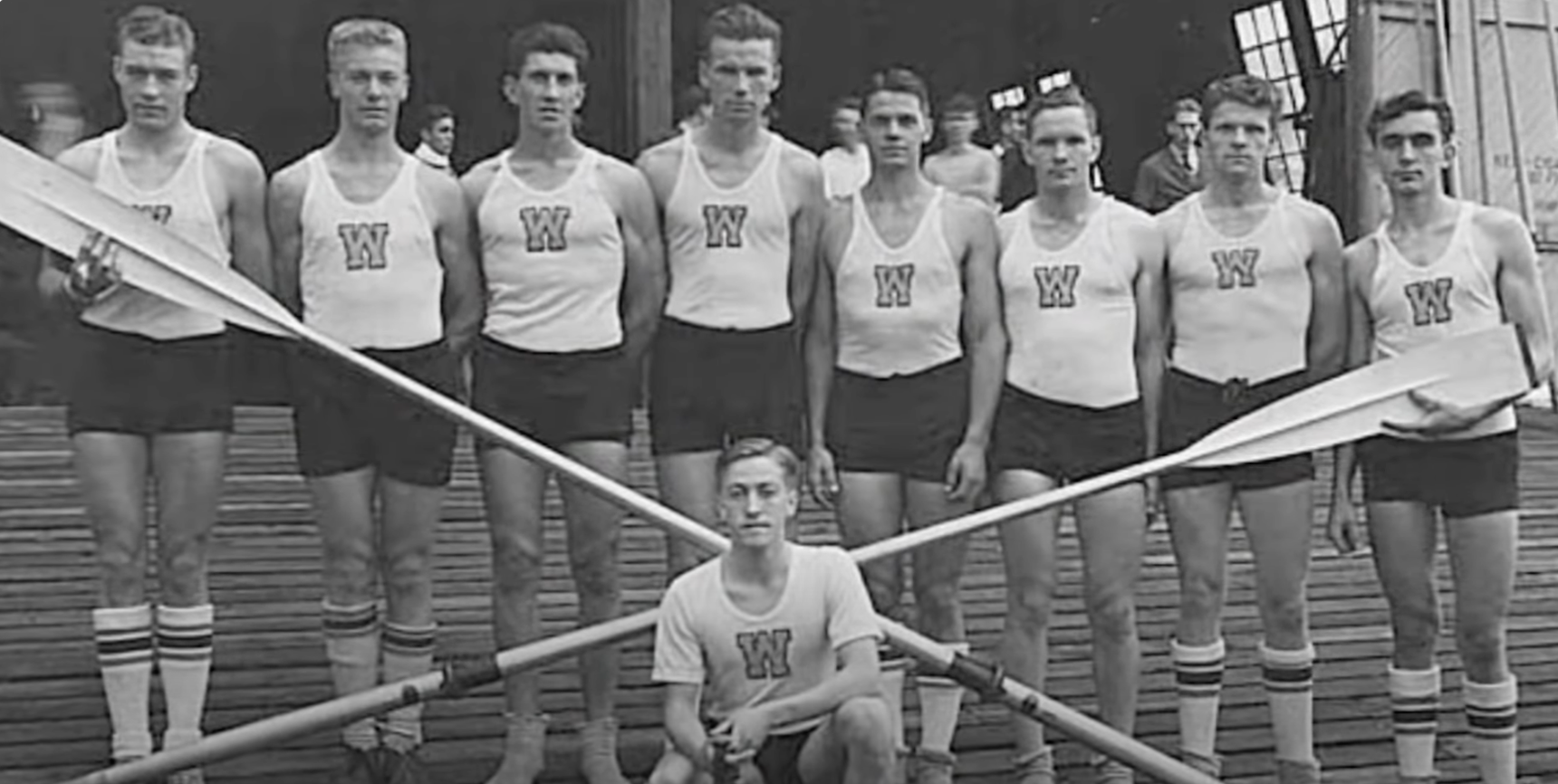
What The Boys In The Boat is about. Short background and great footage of that race. (4')
2000 Sydney Olympics M2- Final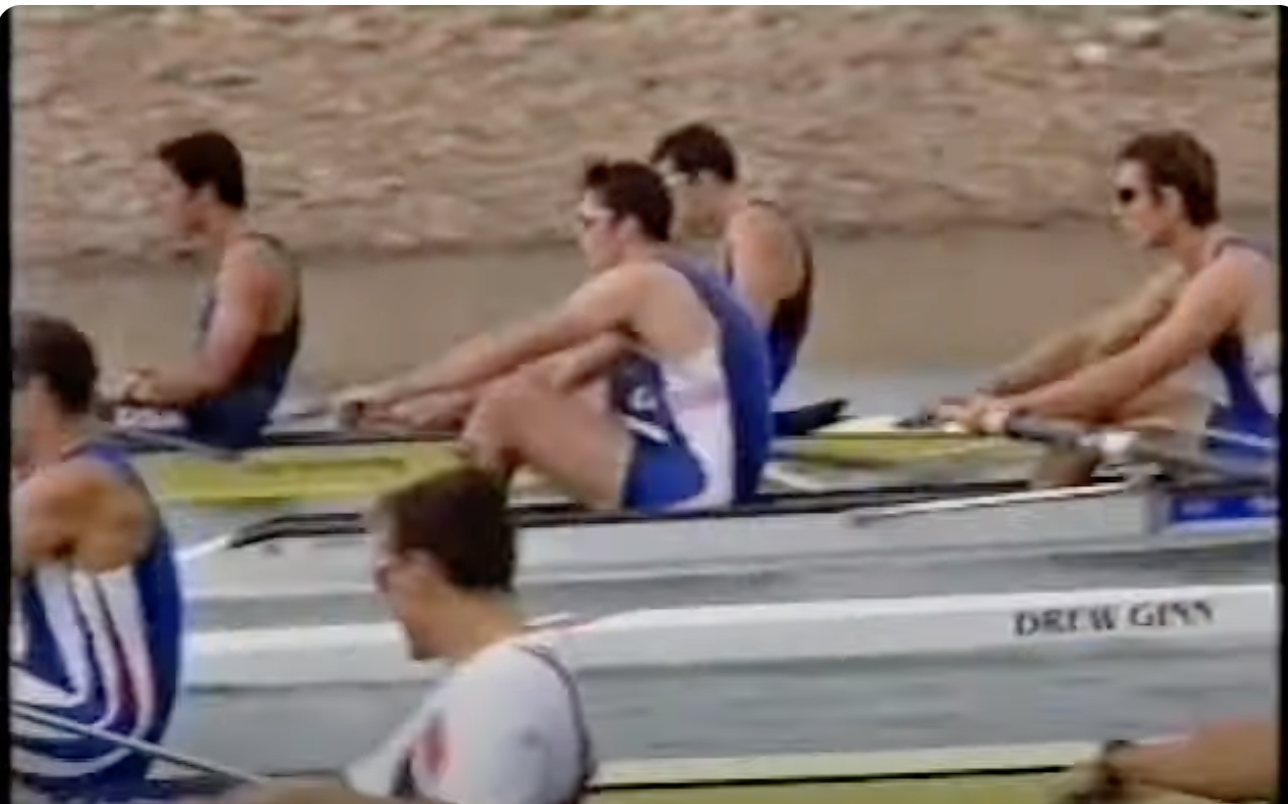
Absolutely incredible final with Greg Searle and Ed Coode racing for GB against the USA, France,
Yugoslavia, Australia and South Africa, and featuring the current World Rowing President. Allez les bleus. (6'50)
2009 HRR Princess Elizabeth QF - Abingdon vs. Belmont Hill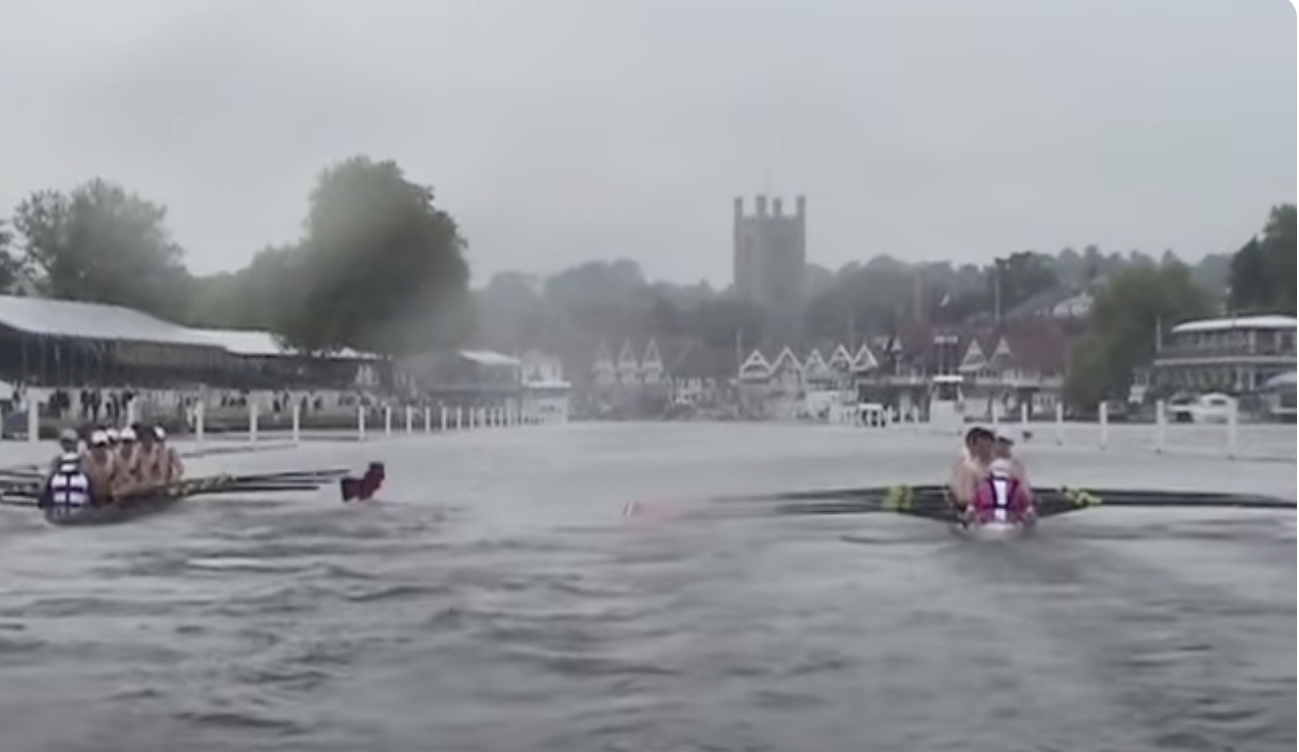
A familiar coxing voice, five years before his Temple win. Great schoolboy racing. (7'32)
With many thanks to Matt Mace for his contributions. Thank you for reading this series and for your feedback and suggestions - I hope you've enjoyed it! Anne Lury |

